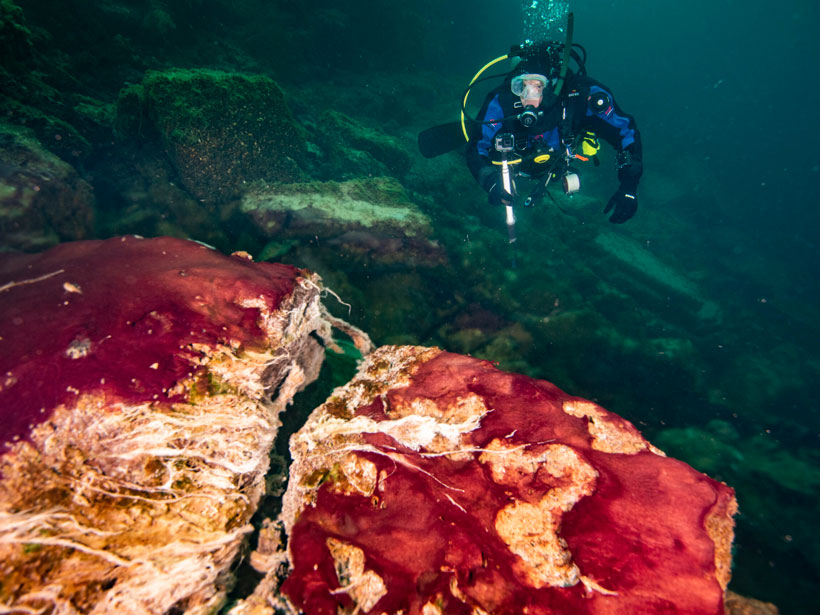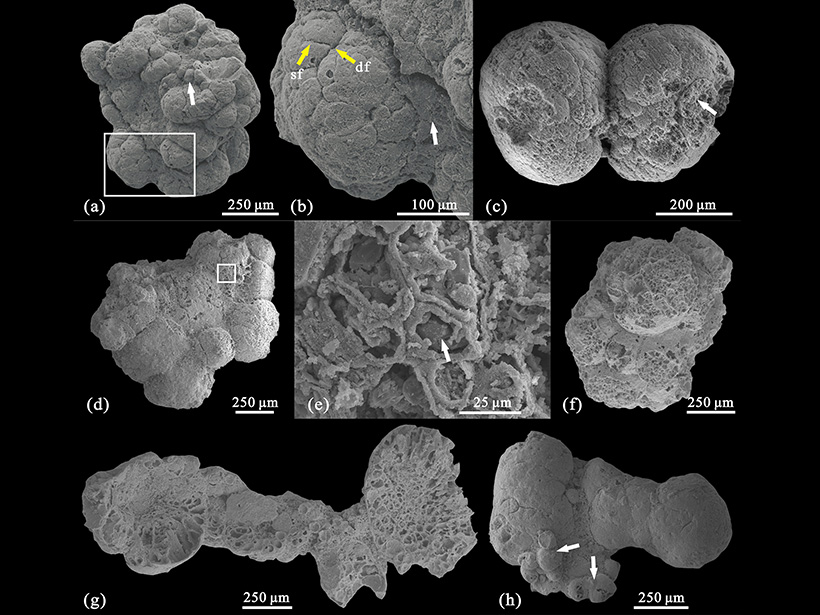Microbial mats in a Lake Huron sinkhole, combined with modeling work, suggest that the changing length of Earth’s day could have played a key role in oxygenating the atmosphere.
life as we know it
Ashley Lindalía Walker: Leading a Celebration of Black Scientists
Astronomer bridges academic and social media outreach.
Multicellular Algae Discovered in an Early Cambrian Formation
A new study describes eukaryotic organisms found organized in a cortex-medulla pattern in southern China’s Kuanchuanpu Formation.
Why Study Geysers?
Aside from captivating our senses, geysers have much to tell us about subsurface fluids, climate change effects, and the occurrence and limits of life on Earth and elsewhere in the solar system.
“Earth Cousins” Are New Targets for Planetary Materials Research
“Cousin” worlds—slightly bigger or slightly hotter than Earth—can help us understand planetary habitability, but we need more lab and numerical experiments to make the most of this opportunity.
A Deep Dive into Organic Carbon Distribution in Hadal Trenches
Researchers use sediment cores to study the amount and origin of sediment organic carbon in one of the least studied regions of the planet: hadal trenches.
Taking Stock of Cosmic Rays in the Solar System
Scientists seek to understand the elusive properties of stellar and galactic cosmic rays before searching for life on exoplanets.
Cloud-to-Ground Lightning May Have Struck a Key Ingredient for Life
On early Earth, rock created by lightning strikes to the ground likely held a form of phosphorus necessary for prebiotic chemistry.
Communicating Earth’s Deep Past: A Q&A with Andrew Knoll
The Earth historian’s new book illustrates the long and winding road that brought our planet into the current moment of global change.
Is Atmospheric Oxygen a Planetary Signature for Life?
While some Earth-like worlds can generate significant O2 only by biology, “waterworlds” and “desert worlds” can build up O2 even without life because of chemical changes from atmosphere loss to space.










